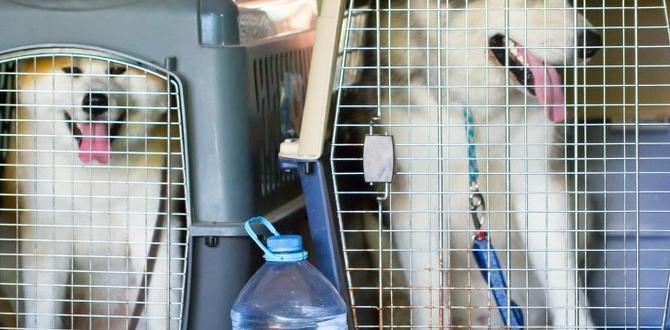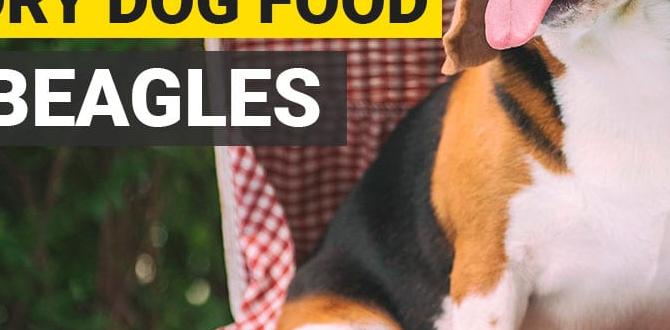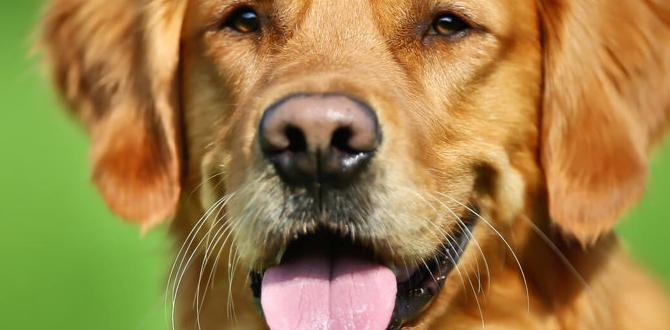Did you know dogs love to chew? It’s their favorite pastime! Chewing helps them explore the world. But what happens when they chew things they shouldn’t? That’s where our dog chewing habits guide comes in handy. This guide will help you understand why dogs chew and what to do about it. Let’s dive in and help your furry friend today!
Key Takeaways
- Chewing is normal behavior for all dogs.
- Our dog chewing habits guide offers helpful tips.
- Certain toys can reduce unwanted chewing.
- Puppies chew more during teething.
- Training helps curb destructive chewing.
Understanding Why Dogs Chew
Dogs chew for many reasons. It’s natural and helps them stay happy. Chewing can relieve stress or boredom. Sometimes, dogs chew to explore new things. They use their mouths like we use our hands. Puppies, especially, love to chew when they’re teething. This helps soothe their gums. But what if your dog chews up your shoes or furniture? Understanding the reasons can help us find solutions.
- Chewing is normal for every dog.
- Teething puppies chew more often.
- Chewing relieves stress and boredom.
- It helps explore the environment.
- Chewing can keep dogs occupied.
- It prevents gum issues in dogs.
- Some dogs chew to gain attention.
To manage chewing, offer your dog safe toys. Toys can redirect their chewing away from your things. Exercise and playtime also help. A tired dog is less likely to chew destructively. Remember, each dog is different. Some may need more training than others. Be patient and consistent. Your dog will learn with time and effort.
Fun Fact or Stats : Puppies have 28 baby teeth, and adult dogs have 42 teeth!
Why Chewing is Important
Have you watched a dog chew a bone? It seems like they’re completely focused. Chewing helps dogs feel calm and relaxed. It’s like when we read a good book. Chewing also keeps their teeth clean and strong. Without chewing, plaque can build up. This can cause dental issues. So, providing chew toys is important for their health. Does your dog have a favorite chew toy?
Signs of Problematic Chewing
Is your dog chewing everything in sight? This might be a problem. Look for signs like destroyed furniture or chewed shoes. Excessive chewing can also mean your dog is bored or anxious. Sometimes, it’s a sign of a health issue. If you’re worried, talk to your vet. They can help figure it out. Remember, not all chewing is bad. But when it becomes destructive, it’s time to act.
How to Encourage Healthy Chewing
Do you know what toys your dog loves? Find out what they like to chew. Offer a variety of toys to keep them interested. Rotate them to make old toys feel new again. Praise your dog for chewing the right things. Positive reinforcement works wonders. Set aside time to play with your dog every day. This keeps them engaged and less likely to chew destructively. A happy dog is a well-behaved dog!
Choosing the Right Chew Toys
Picking the right chew toys can be tricky. There are so many options! Choose toys that are safe and durable. Some toys are designed for strong chewers. Others are more suitable for gentle chewers. It’s essential to consider your dog’s size and chewing habits. A dog chewing habits guide can help you choose the best toys. Providing the right toys prevents boredom and unwanted chewing.
- Consider your dog’s size and strength.
- Choose durable toys for strong chewers.
- Soft toys are best for gentle chewers.
- Rotate toys to keep them interesting.
- Check toys regularly for wear and tear.
- Avoid toys that are too small.
- Some toys clean teeth while chewing.
Chew toys can also help with training. Use them as rewards for good behavior. Make sure to supervise your dog with new toys. This ensures they are using them safely. Always remove toys that are too worn out. Safety comes first! With the right toys, your dog will be happier and healthier.
Fun Fact or Stats : About 80% of dogs report less stress with regular chew toys!
| Chew Toy Type | Best For | Durability | Special Feature |
|---|---|---|---|
| Rubber Toys | Strong chewers | High | Dental health |
| Plush Toys | Puppies | Low | Comfort |
| Rope Toys | Interactive play | Medium | Dental cleaning |
| Edible Chews | Food-motivated dogs | Varies | Nutrient-rich |
Simple Steps to Choose
Ever walked into a pet store and felt overwhelmed? There are so many toys! Start by observing what your dog enjoys. Do they like to chew hard or gently? Are they easily bored with toys? Match the toy to their habits. If your dog is a strong chewer, opt for durable rubber toys. For playful pups, try soft plush toys. Be sure to pick safe toys, free from small parts. Safety first!
Understanding Toy Materials
Ever wonder what toys are made of? Materials matter! Rubber toys are tough and good for hard chewers. Plush toys are soft, perfect for cuddling. Rope toys double as dental cleaners. Each material has its pros and cons. Always check for safety labels and look for non-toxic options. A safe toy keeps your dog happy and healthy. What kind of toys does your dog love best?
Interactive Toys for Mental Stimulation
Does your dog get bored easily? Interactive toys can help! These toys challenge your dog’s mind. Puzzle toys can hide treats and encourage problem-solving. Some toys encourage active play, like fetch or tug-of-war. These toys keep your dog engaged and less likely to chew things they shouldn’t. Try different types to see what works best for your dog. Stimulating their mind is as important as physical exercise!
Training Your Dog to Reduce Chewing
Training can help control your dog’s chewing habits. But where to start? Begin with basic commands like “leave it” or “drop it.” Consistency is crucial. Train your dog daily for best results. Reward good behavior with praise or treats. Use our dog chewing habits guide for more tips on training. Remember, patience is key. Every dog learns at their own pace. Create a positive learning environment for your dog.
- Start with basic commands.
- Be consistent with your training.
- Use praise and rewards for good behavior.
- Train daily for best results.
- Keep training sessions short and fun.
- Be patient and understanding with your dog.
- Seek professional help if needed.
Training should be a bonding experience for you and your dog. It builds trust and understanding. Use positive reinforcement to encourage your dog. Avoid punishment, as it can create fear. Instead, redirect their energy to appropriate toys. Training takes time, but the rewards are worth it. A well-trained dog is a joy to have around.
Fun Fact or Stats : Dogs can learn over 165 words, making training easier!
Teaching Basic Commands
Ever thought about teaching your dog new tricks? Start with basics like “sit,” “stay,” or “come.” Use clear, simple words. Be consistent with your commands. Reward your dog with treats or affection. This makes learning fun and exciting. Keep sessions short to maintain interest. Dogs love to learn and please. Training strengthens your bond. And a well-trained dog is less likely to chew things they shouldn’t!
Setting Boundaries at Home
Is your dog wandering into areas they shouldn’t? Set boundaries at home to prevent unwanted chewing. Use baby gates or close doors to restrict access. Teach your dog which areas are off-limits. Praise them for staying where they should. Consistency is key to setting boundaries. Over time, your dog will understand the limits. A safe environment prevents destructive chewing. What boundaries will you set today?
Using Positive Reinforcement
How do you reward your dog? Positive reinforcement is a powerful tool. Praise and treats encourage good behavior. When your dog chews on the right things, reward them. This helps them learn quickly. Avoid punishment, as it can confuse your dog. Focus on the positive! Use treats, toys, or extra playtime as rewards. Your dog will appreciate the encouragement. Happy dogs make happier homes!
Monitoring and Managing Chewing
Keeping an eye on your dog’s chewing habits is important. But how do you manage it? Start by observing their behavior. Identify patterns or triggers. This helps in creating a plan. Provide your dog with plenty of toys. Rotate them to maintain interest. Engage in regular playtime. A tired dog is less likely to chew. Use our dog chewing habits guide for more insights. Consistent management keeps chewing in check.
- Observe your dog’s chewing behavior.
- Identify any patterns or triggers.
- Provide a variety of chew toys.
- Engage in regular playtime.
- Rotate toys to maintain interest.
- Monitor toys for wear and tear.
- Seek help if needed for more guidance.
Managing chewing is a team effort. Involve everyone in the household. Consistency is crucial. Ensure everyone follows the same rules. Praise your dog for chewing the right things. Set realistic goals and be patient. With time, your dog will understand what’s allowed. A well-managed dog is a happy dog.
Fun Fact or Stats : Dogs can chew up to 1,000 hours a year if left untrained!
Observing Behavior Changes
Have you noticed any changes in your dog’s behavior? Changes might indicate stress or boredom. Observe what your dog chews and when. This can help identify triggers. Addressing these issues can reduce unwanted chewing. Keep a diary of their behavior. This makes patterns easier to spot. Understanding your dog is key to managing their habits. What have you observed in your dog’s behavior?
Creating a Chew-Friendly Environment
Is your home chew-friendly? Creating a safe environment is important. Remove tempting items like shoes or cords. Provide a variety of toys instead. Set up a designated chew area with comfy bedding. This encourages your dog to chew there. Be consistent with boundaries. Praise your dog for using the chew area. A chew-friendly environment prevents accidents. Make your home a safe haven for your dog!
Seeking Professional Advice
Feeling stuck with your dog’s chewing habits? Sometimes, professional help is needed. Vet visits can rule out health issues. Trainers provide behavior tips and techniques. They offer insights tailored to your dog’s needs. Don’t hesitate to ask for guidance. Professionals have the expertise to help. With the right support, your dog can overcome chewing challenges. Remember, asking for help is a sign of strength!
Conclusion
Understanding dog chewing habits can be challenging. Our dog chewing habits guide provides valuable tips. By offering the right toys, setting boundaries, and training, you can manage chewing effectively. Remember, patience and consistency are key. With time and care, your dog will learn what is allowed. A well-managed dog is a happy companion. Keep learning and enjoy the journey with your furry friend!
FAQs
Question: Why do dogs chew?
Answer: Dogs chew for many reasons. It’s a natural behavior. Chewing helps them explore and relieve stress. Puppies, especially, chew during teething. They use their mouths like we use our hands. It’s also a way to keep their teeth strong. Understanding these reasons helps us manage their habits better.
Question: How can I stop my dog from chewing everything?
Answer: Start by understanding the reasons for your dog’s chewing. Provide plenty of safe toys. Use our dog chewing habits guide for tips. Training and setting boundaries help too. Engage in regular playtime. A tired dog is less likely to chew destructively. Consistency and patience are key to success!
Question: What are the best toys for chewers?
Answer: The best toys depend on your dog’s habits and size. Durable rubber toys are great for strong chewers. Plush toys work well for gentle chewers. Rope toys clean teeth during play. Always choose safe, non-toxic materials. Consider your dog’s preferences and rotate toys to keep them interested. Our dog chewing habits guide can help with more tips!
Question: Can chewing help with my dog’s anxiety?
Answer: Yes, chewing can help relieve anxiety in dogs. It provides a calming effect. Chewing is a healthy outlet for stress. Providing the right toys can reduce anxiety-related chewing. Engaging in regular playtime also helps. If anxiety persists, consult a vet for advice. They may suggest additional ways to help your dog relax.
Question: How do I train my dog to chew only toys?
Answer: Training requires patience and consistency. Use commands like “leave it” and “drop it.” Reward your dog for chewing the right toys. Offer plenty of options to keep them interested. Use positive reinforcement to encourage good behavior. Our dog chewing habits guide provides more training tips. Remember, it takes time, so be patient!
Question: Are some dogs more prone to chewing?
Answer: Yes, some dogs chew more than others. Puppies chew more, especially during teething. Certain breeds are known for strong chewing habits. Understanding your dog’s breed and behavior helps in managing it. Provide the right toys and training. Our dog chewing habits guide offers insights tailored to all dogs. Each dog is unique, so adapt to their needs!
Meet Elyse Colburn, the devoted canine companion and storyteller behind the enchanting world of “Tales, Tails, and Adventures Unleashed.” A passionate dog enthusiast with a heart full of paw prints, Elyse Colburn shares heartwarming tales and insightful adventures, celebrating the joy, loyalty, and endless antics that make every dog a true hero. Join Elyse Colburn on this tail-wagging journey, where every post is a love letter to our four-legged friends.








